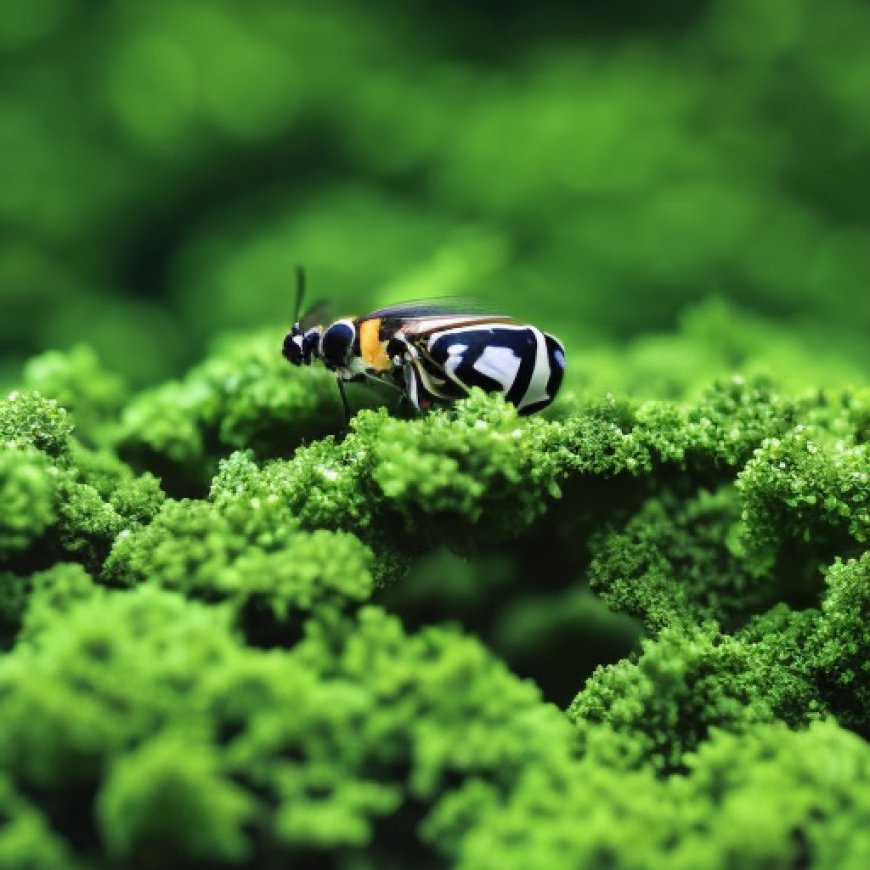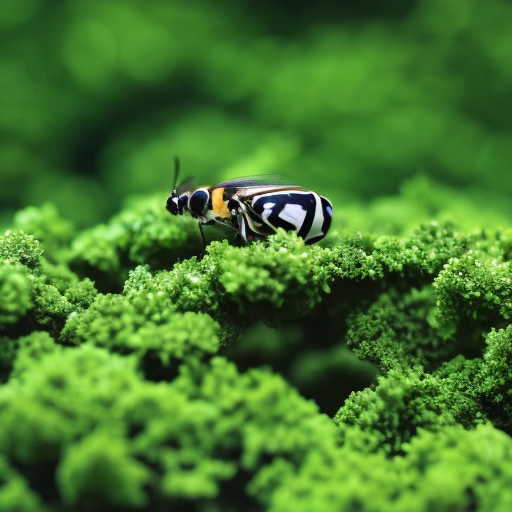Getting to the other side of the biodiversity crisis | GreenBiz
Getting to the other side of the biodiversity crisis GreenBiz


The Biodiversity Crisis: A Report on Sustainable Development Goals

Unless you’ve been hibernating, you know that planet Earth is in the midst of a full-blown, global-scale biodiversity crisis. Biodiversity refers to the total number of organisms across the planet that are present in ecosystems, species and genes.
Across the past 500 million years of Earth’s history, there have been five previous biodiversity “extinction” crises that have wiped out vast pools of living things. Earth’s recovery from these previous known extinctions (none of them caused by humans) has averaged 10 million years. A growing number of scientists and authors have concluded that we have entered the sixth extinction crisis — and this one is attributable to human activities.
Business as usual for biodiversity protection
Many useful initiatives are already implemented to conserve natural resources and preserve biodiversity. They include international collaboration through the United Nations Convention on Biological Diversity; preservation and restoration of ecosystems and species; pro-biodiversity changes in land use; pollution controls of air and chemical releases, wastewaters and hazardous materials; reductions in stratospheric ozone-depleting agents and more recent focus on methane controls from oil and gas operations; and numerous scientific studies and surveys intended to better document the existing status of biodiversity as well as identify previously undiscovered species.
Many of these actions are having an impact. The late naturalist E.O. Wilson estimated that, for land-dwelling vertebrates, global conservation efforts have succeeded in lowering the extinction rate of species by 20 percent. However, he noted, present-day conservation efforts fall “far short of what is needed to save the natural world. The conservation movement has slowed the species extinction rate but failed to bring it anywhere close to the prehuman level.”
Solving the biodiversity crisis
As more scientific, government, nonprofit, business and citizen voices exhibit greater awareness of the biodiversity crisis, calls are emerging for more ambitious and comprehensive actions to protect resources on a global scale. Accompanying this awareness is an increasing realization that the relative climate stability of the past 10,000 years (the period in which humans emerged and resided on the Earth) is coming to an end due largely to instability generated by our activities since the Industrial Revolution in the 1700s. Future efforts to stabilize and protect biodiversity must inherently account for greater climate variability.
Four global-scale initiatives will be essential to develop a biodiversity strategy that can stem the current crisis and enable the natural world to repair itself. They include:
- Mapping Earth’s biodiversity: We remain only partially informed of the total number of organisms in existence. In contrast to scientific advances to map the human genome, we are flying biologically blind on even knowing how many vertebrates (fishes, amphibians, reptiles, birds, mammals) and invertebrates (insects, crustaceans, earthworms, algae, fungi, flowering plants, bacteria and other microorganisms) live among us. Scientists working on biodiversity estimate that the number of known species presently exceeds 2 million and that only about 20 percent or fewer of Earth’s biodiversity at the species level have been discovered. Scientists are in a race against time to identify and classify as many existing species as possible before they disappear under the ever-expanding human footprint. Mapping the Earth’s biodiversity will require unprecedented collaboration, funding and multiyear commitments at global scale to obtain the most basic knowledge necessary to sustain life, including human life, as we enter a period of increasing climate and, hence, biological instability.
- Rewilding the world: “It is no accident that the planet’s stability has wavered just as its biodiversity has declined. The two things are bound together.” With these words, naturalist and broadcaster Sir David Attenborough has called for a planetary scale effort to “rewild the world” by restoring its biodiversity. This ambitious campaign includes switching to clean energy, expanding wilderness areas (to protect biodiversity and expand carbon sinks), enabling fish stocks to recover and instituting smarter fishing practices to protect vulnerable species, and reducing the amount of land necessary for agriculture (and thereby expanding habitats).
In parallel with these efforts, Wilson published in 2016 his proposal for “Half-Earth,” a comprehensive concept to set aside the largest possible reserves for nature for the millions of species that remain alive. Government policies, and the voluntary actions of aligned stakeholders, must play a critical role if these efforts are to succeed.
- Mobilizing the private sector: Presently, most companies, either privately held, publicly traded or state-owned, have not regarded biodiversity protection as a business priority, nor is this a topic with which senior executives exhibit much familiarity. This is beginning to change as elements of the natural world — climate, oceans, freshwater resources and forests — create risks to business operations and products. The World Economic Forum ranks biodiversity loss and ecosystem collapse as one of the top five threats humanity will face in the next 10 years.
The role of business in biodiversity protection begins with three interrelated steps: reporting nature-related risks in their financial disclosures by using a framework prepared by the Taskforce on Nature-related Financial Disclosures; understanding and mitigating biodiversity risks across company supply chains; and researching and applying alternative materials — green chemistry, synthetic biology and nanotechnology — in product innovation.
- Managing our way to a sustainable population level: Humans presently consume
SDGs, Targets, and Indicators
SDGs Targets Indicators SDG 14: Life Below Water Target 14.2: Sustainably manage and protect marine and coastal ecosystems Indicator not mentioned in the article SDG 15: Life on Land Target 15.5: Take urgent and significant action to reduce the degradation of natural habitats Indicator not mentioned in the article SDG 13: Climate Action Target 13.3: Improve education, awareness-raising, and human and institutional capacity on climate change mitigation, adaptation, impact reduction, and early warning Indicator not mentioned in the article SDG 12: Responsible Consumption and Production Target 12.4: By 2020, achieve the environmentally sound management of chemicals and all wastes throughout their life cycle, in accordance with agreed international frameworks, and significantly reduce their release to air, water, and soil to minimize their adverse impacts on human health and the environment Indicator not mentioned in the article SDG 11: Sustainable Cities and Communities Target 11.7: By 2030, provide universal access to safe, inclusive, and accessible, green, and public spaces, in particular for women and children, older persons, and persons with disabilities Indicator not mentioned in the article SDG 6: Clean Water and Sanitation Target 6.3: Improve water quality by reducing pollution, eliminating dumping, and minimizing release of hazardous chemicals and materials, halving the proportion of untreated wastewater, and substantially increasing recycling and safe reuse globally Indicator not mentioned in the article SDG 2: Zero Hunger Target 2.4: By 2030, ensure sustainable food production systems and implement resilient agricultural practices that increase productivity and production, that help maintain ecosystems, that strengthen capacity for adaptation to climate change, extreme weather, drought, flooding, and other disasters, and that progressively improve land and soil quality Indicator not mentioned in the article SDG 1: No Poverty Target 1.4: By 2030, ensure that all men and women, in particular the poor and the vulnerable, have equal rights to economic resources, as well as access to basic services, ownership, and control over land and other forms of property, inheritance, natural resources, appropriate new technology, and financial services including microfinance Indicator not mentioned in the article 1. Which SDGs are addressed or connected to the issues highlighted in the article?
- SDG 14: Life Below Water
- SDG 15: Life on Land
- SDG 13: Climate Action
- SDG 12: Responsible Consumption and Production
- SDG 11: Sustainable Cities and Communities
- SDG 6: Clean Water and Sanitation
- SDG 2: Zero Hunger
- SDG 1: No Poverty
The issues highlighted in the article, such as the biodiversity crisis, conservation efforts, and the need for sustainable practices, are connected to multiple SDGs that aim to address environmental sustainability, climate change, and poverty eradication.
2. What specific targets under those SDGs can be identified based on the article’s content?
- Target 14.2: Sustainably manage and protect marine and coastal ecosystems
- Target 15.5: Take urgent and significant action to reduce the degradation of natural habitats
- Target 13.3: Improve education, awareness-raising, and human and institutional capacity on climate change mitigation, adaptation, impact reduction, and early warning
- Target 12.4: By 2020, achieve the environmentally sound management of chemicals and all wastes throughout their life cycle, in accordance with agreed international frameworks, and significantly reduce their release to air, water, and soil to minimize their adverse impacts on human health and the environment
- Target 11.7: By 2030, provide universal access to safe, inclusive, and accessible, green, and public spaces, in particular for women and children, older persons, and persons with disabilities
- Target 6.3: Improve water quality by reducing pollution, eliminating dumping, and minimizing release of hazardous chemicals and materials, halving the proportion of untreated wastewater, and substantially increasing recycling and safe reuse globally
- Target 2.4: By 2030, ensure sustainable food production systems and implement resilient agricultural practices that increase productivity and production, that help maintain ecosystems, that strengthen capacity for adaptation to climate change, extreme weather, drought, flooding, and other disasters, and that progressively improve land and soil quality
- Target 1.4: By 2030, ensure that all men and women, in particular the poor and the vulnerable, have equal rights to economic resources, as well as access to basic services, ownership, and control over land and other forms of property, inheritance, natural resources, appropriate new technology, and financial services including microfinance
The article discusses the need for sustainable management and protection of marine and coastal ecosystems (Target 14.2), urgent action to reduce the degradation of natural habitats (Target 15.5), education and awareness-raising on climate change (Target 13.3), environmentally sound management of chemicals and wastes (Target 12.4), universal access to safe and green spaces (Target 11.7), improvement of water quality (Target 6.3), sustainable food production systems (Target 2.4), and equal access to economic resources and natural resources (Target 1.4).
3. Are there any indicators mentioned or implied in the article that can be used to measure progress towards the identified targets?
No specific indicators are mentioned or implied in the
Behold! This splendid article springs forth from the wellspring of knowledge, shaped by a wondrous proprietary AI technology that delved into a vast ocean of data, illuminating the path towards the Sustainable Development Goals. Remember that all rights are reserved by SDG Investors LLC, empowering us to champion progress together.
Source: greenbiz.com

Join us, as fellow seekers of change, on a transformative journey at https://sdgtalks.ai/welcome, where you can become a member and actively contribute to shaping a brighter future.







